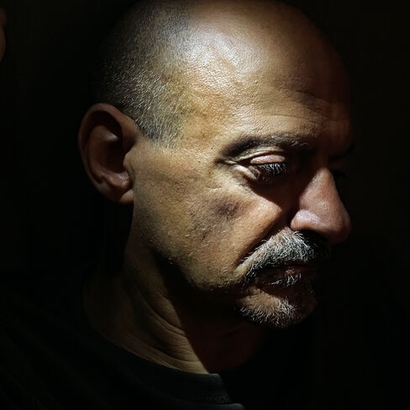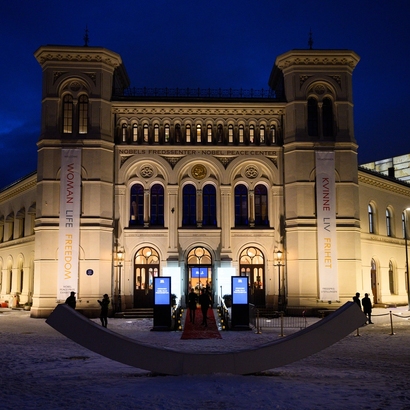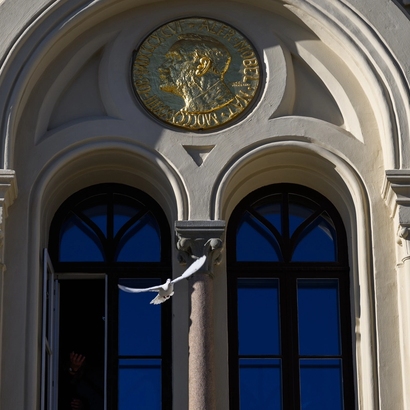Japanese architect featured in the new Peace Prize exhibition
One thousand wooden figures on the floor of the exhibition represent one thousand testimonies from the survivors of the atomic bombings of Hiroshima and Nagasaki.
This year's Peace Prize exhibition shares the powerful story of Nobel Peace Prize laureate Nihon Hidankyo and the Hibakusha—survivors of the atomic bombings of Hiroshima and Nagasaki — and shows their work for a world free of nuclear weapons.
Kengo Kuma is one of Japan's most respected contemporary architects, known for his innovative and sustainable designs that blend traditional Japanese building techniques with modern architectural methods. Born in 1954 in Yokohama, Japan, he has had a long and impressive career in architecture. His work is characterized by a deep respect for nature, the use of natural materials, and an often minimalist yet poetic approach.
“We are very pleased that Kengo Kuma is contributing to this year's Peace Prize exhibition. His representation of the Hibakusha carries both fascinating symbolism and a deep respect for humanity in their tragic stories. At the same time, he creates space for dialogue and shows us that the voices of the Hibakusha are crucial for our future,” says Kjersti Fløgstad, Director of the Nobel Peace Center.
Kuma’s contribution to the exhibition consists of 1,000 wooden objects inspired by the book "The Witness of those Two Days", which contains a thousand testimonies from the survivors of Hiroshima and Nagasaki. The book was created by members of Nihon Hidankyo. Each object is crafted from wood sourced from Hiroshima and joined using a technique called kigumi, which results in a seamless finish. These objects will be displayed in the exhibition, where visitors can pick them up and find the testimonies of the survivors as well as to listen to selected stories from the book in audio format.
Alejandra Méndez, exhibition designer, shares her thoughts on the collaboration with Kengo Kuma to highlight these stories:
“We wanted people to have an intimate experience with the testimonies of the survivors, and we found several references to wooden objects, dolls, and lanterns, trying to figure out the best way to present them. That’s when Kengo Kuma came into the picture, and we decided to invite him to design the objects. Each piece will represent one of the thousand stories told by Nihon Hidankyo in their book.”
Kuma has previously designed several important public buildings and cultural institutions that promote dialogue, reflection, and understanding of historical events, including the catastrophic consequences of nuclear weapons. He has also been part of the architectural teams working on projects related to memorials and cultural institutions in Japan.
ABOUT KENGO KUMA
Kengo Kuma (born 1954 in Yokohama) is a renowned Japanese architect known for his innovative and sustainable designs that combine traditional Japanese architecture with modern techniques. He often uses natural materials such as wood, stone, and bamboo, focusing on creating spaces that harmonize with nature. Kuma’s most famous projects include the Japan National Stadium, V&A Dundee, and the Asakusa Culture and Tourism Center. He is an advocate for sustainable building practices and uses architecture as a tool to strengthen human connection to the environment. Kuma has received numerous prestigious awards and is a professor at the University of Tokyo.
ABOUT THE 2024 PEACE PRIZE EXHIBITION
The 2024 Peace Prize exhibition shares the powerful story of Nobel Peace Prize laureate Nihon Hidankyo and the Hibakusha—survivors of the atomic bombings of Hiroshima and Nagasaki — and shows their work for a world free of nuclear weapons. The exhibition opens to the public on December 12 at 11:00. The press is invited to a viewing of the exhibition on December 9 from 9:00–11:00. Director Kjersti Fløgstad and exhibition director Henrik Treimo will be present at the to answer questions. For more information, please see the Nobel Peace Center’s press program for the Nobel Days here or contact press officer Tara Bamberg at tb@nobelpeacecenter.org
Related:
About the Nobel Peace Center
- one of Norway's most visited museums, with more than 200.000 visitors per year, including school groups
- presents the story of Alfred Nobel, the Nobel Peace Prize laureates and their work
- is situated in the heart of Oslo, near the City Hall
- Kjersti Fløgstad is the Executive Director, Olav Njølstad is Chair of the Board
- Main partners are Hydro and Reitan Retail
Share:
Press contact
Tara Bamberg
tb@nobelpeacecenter.org
+47 455 04 573


